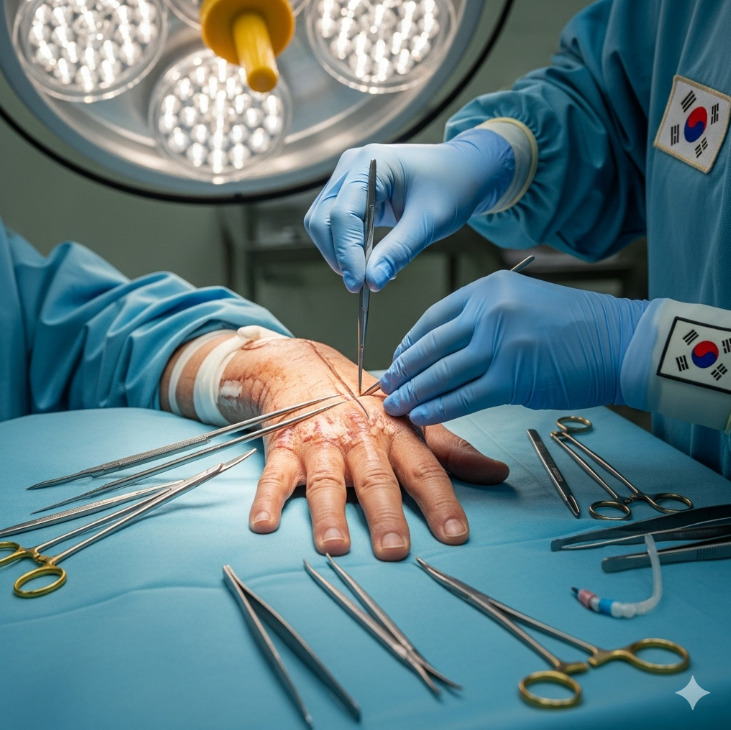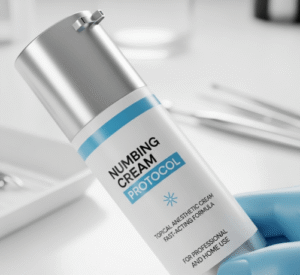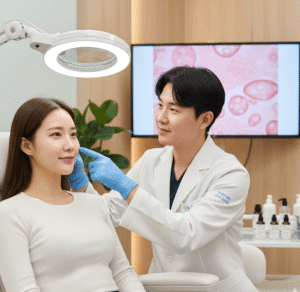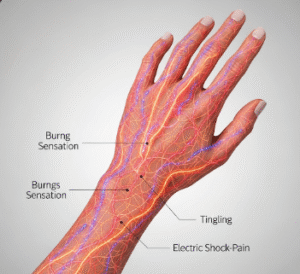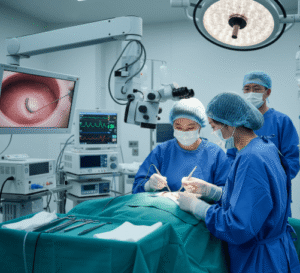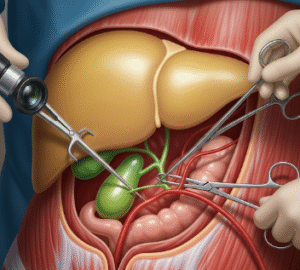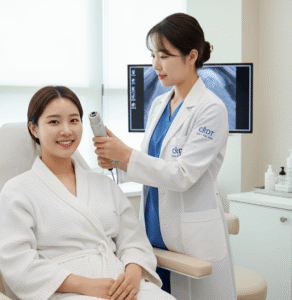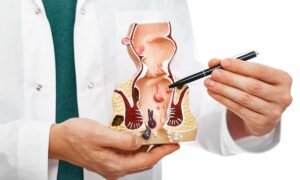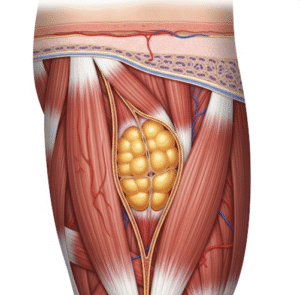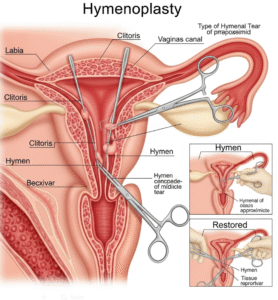What It Is
Burn scar contracture release is a reconstructive surgery performed to correct tight, restrictive scars caused by deep burns. When severe burns heal, they can form contractures—scar tissue that pulls the skin and underlying structures together. This restricts movement, joint function, and normal growth in children.
The surgery involves releasing the tight scar tissue and replacing it with skin grafts, local flaps, or advanced reconstructive techniques. In Korea, modern approaches use a combination of microsurgery, laser scar management, and physical therapy to restore both function and appearance.
Why It’s Done
Patients undergo burn scar contracture release because:
- Burn scars limit movement of joints such as the neck, elbows, knees, or hands.
- They experience functional impairment, making daily activities difficult.
- The scars cause pain, itching, or disfigurement.
- They want to improve cosmetic appearance and quality of life.
Good candidates include:
- Patients with mature burn scars that cause functional or cosmetic problems.
- Children with contractures affecting growth and mobility.
- Adults whose daily activities are restricted due to scar tightening.
Alternatives
- Non-surgical treatments: Pressure garments, silicone sheets, and steroid injections may help in mild cases.
- Laser therapy: Can soften and flatten scars, but does not fully release severe contractures.
- Physical therapy alone: Helps maintain mobility but cannot correct fixed contractures.
Preparation
Before undergoing surgery in Korea, patients will:
- Have a consultation including physical examination and scar assessment.
- Undergo imaging and movement analysis if contractures affect joints.
- Stop smoking and alcohol at least 4 weeks prior to improve healing.
- Continue physiotherapy before surgery to maintain mobility.
- Discuss the likely need for staged surgeries in complex cases.
How It’s Done
- Anesthesia: General anesthesia is typically used.
- Scar release: The surgeon carefully cuts or excises the tight scar tissue.
- Coverage: The defect is covered with one of the following:
- Skin grafts (split- or full-thickness).
- Local flaps using adjacent healthy tissue.
- Regional or free flaps for extensive defects.
- Adjunct treatments: Tissue expanders, dermal substitutes, or laser therapy may be added.
- Duration: 2–6 hours depending on severity and area treated.
Recovery
- First 2 weeks: Swelling, pain, and wound care are closely managed. Dressings and splints may be applied to keep the area in position.
- Physiotherapy: Starts immediately or within days to maintain mobility and prevent recurrence.
- Return to work/school: Light activities within 2–3 weeks; full recovery may take months.
- Long-term care: Compression garments and scar therapy are usually continued for several months.
Possible Complications
- Recurrence of contracture if scar tissue reforms.
- Infection or delayed wound healing.
- Graft or flap failure.
- Hypertrophic scarring or pigmentation changes.
- Rare risks: nerve or tendon damage in severe cases.
Treatment Options in Korea
Diagnosis
Korean reconstructive surgeons assess contractures with physical exam, imaging (X-ray, MRI), and motion analysis for joint involvement.
Medical Treatments
- Laser scar treatment (fractional CO₂ or pulsed dye lasers) to soften scars.
- Silicone therapy and pressure garments for ongoing scar control.
- Steroid or anti-fibrotic injections for hypertrophic scar prevention.
Surgical or Advanced Therapies
- Contracture release with skin grafting for moderate cases.
- Local and regional flap reconstruction for better function and appearance.
- Free flap surgery with microsurgical techniques for extensive or recurrent contractures.
- Combined therapies: Laser treatment and fat grafting to improve elasticity and appearance.
Rehabilitation and Support
- Comprehensive postoperative physiotherapy to restore mobility.
- Scar management programs including compression garments and laser therapy.
- Long-term follow-ups to monitor growth in children.
- International patients benefit from Korea’s advanced burn rehabilitation centers and multilingual care.

